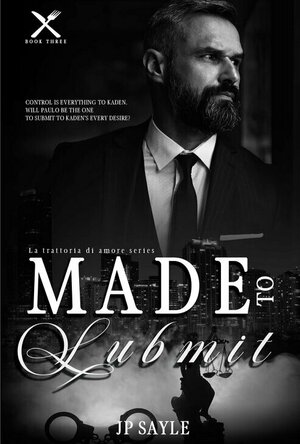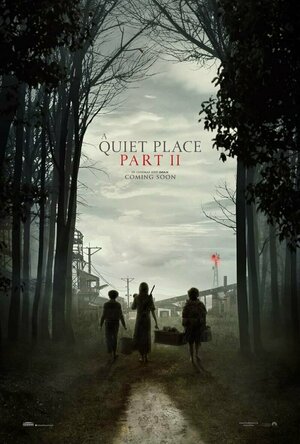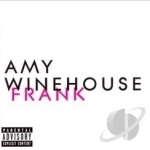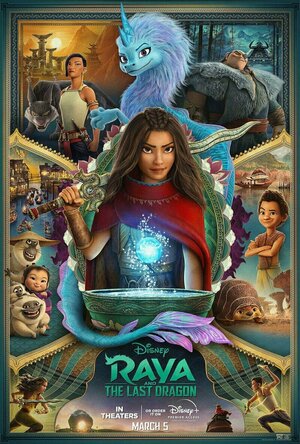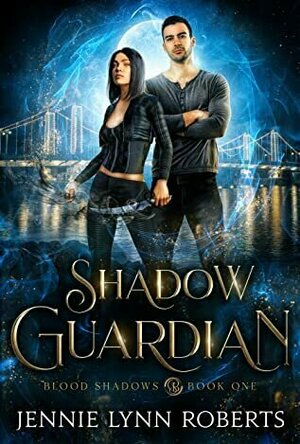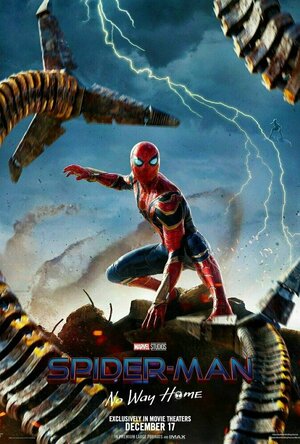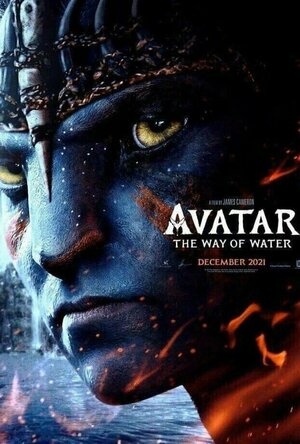Search
Search results

LetterReflex - Overcoming Letter Reversals & Backwards Writing in Early Childhood Development & Dyslexic Children
Medical and Education
App
(Ed. note: Be sure to also check out the new award-winning app Dexteria VMI.) #Featured in the App...
Debbiereadsbook (1617 KP) rated Made to Submit (La Trattoria Di Amore #3) in Books
May 12, 2021
I was surprised at this book, and I don't know why. I don't care, cos I loved it!
Independent reviewer for Archaeolibrarian, I was gifted my copy of this book.
This is book 3 in the La Trattoria Di Amore series, but it can be read as a stand alone. Indeed I am reading this one in the series first, and I didn't feel I missed anything. Something was cleared up from another book though, and I'll come back to that.
Paulo fell in love with Carl (book 2) at 15. He learned all he could about BDSM for Carl, and followed him to London a long time later, for carl to see the man he has become. But Carl has Adam, and Paulo is struggling. Being moved from one restaurant to another, to work under Kaden throws Paulo into a tailspin. Kaden has watched Paulo for a while. The young man does things to him that he didn't see coming. A simple taste test bring Paulo to Kaden's feet, and it's Kaden who is in a tail spin!
I started to read this book, just a few pages is the lie you tell yourself, before I had to get up and go about my day. Next thing, I've ran out of book and I have questions!
Questions, Ms Sayle, my mind has questions! However, I'm fully able to ask the single question I need to, but later. I thought you'd find that amusing :-)
Anyway, back to the book!
Oh, I loved this! Kaden needs to control everything, at work and at home. The guys he works with are attuned to his ways, but he's just a boss who likes things done just so, according to them. Paulo, however, makes Kaden want, so much. Want everything, if he's honest with himself, which at times, he isn't. Paulo brings out Kaden's Dom side, and Paulo? Oh Paulo is beautiful in his reaction to Kaden's words, his touches.
Paulo needs to work Carl out of his system, but very quickly Paulo realises that Carl was never really there. It was the IDEA of Carl, of what Carl could be for Paulo, that lodged all that long ago. And now Kaden has, quite literally, taken Paulo in hand, Paulo knows, he KNOWS that whatever he wanted with Carl would never be a patch on what Kaden can give him.
Paulo has been with other Doms before, but the level of control that Kaden needs is far higher than he had, but also, it's what he really needs. And it really is amazing watching these two find their footing, find their kink (which isn't as high a level as I was expecting, to be honest!) and to find out, what one takes, the other gives.
Back to my question! Does Smithy, Kaden's friend and mentor get a story? With Jesse, from the restaurant perhaps?? Jesse is hurting, and I want to know why!
And the point cleared up? Paulo appears in the Mine, Body and Soul trilogy. He's mean to Lenny in those books, and it was never cleared up why. I was curious. HERE, we get why. And you understand a bit better why Paulo treated Lenny the way he does.
I was surprised at this book, and I don't know why. I don't care, cos I loved it!
5 full and shiny stars
**same worded review will appear elsewhere**
This is book 3 in the La Trattoria Di Amore series, but it can be read as a stand alone. Indeed I am reading this one in the series first, and I didn't feel I missed anything. Something was cleared up from another book though, and I'll come back to that.
Paulo fell in love with Carl (book 2) at 15. He learned all he could about BDSM for Carl, and followed him to London a long time later, for carl to see the man he has become. But Carl has Adam, and Paulo is struggling. Being moved from one restaurant to another, to work under Kaden throws Paulo into a tailspin. Kaden has watched Paulo for a while. The young man does things to him that he didn't see coming. A simple taste test bring Paulo to Kaden's feet, and it's Kaden who is in a tail spin!
I started to read this book, just a few pages is the lie you tell yourself, before I had to get up and go about my day. Next thing, I've ran out of book and I have questions!
Questions, Ms Sayle, my mind has questions! However, I'm fully able to ask the single question I need to, but later. I thought you'd find that amusing :-)
Anyway, back to the book!
Oh, I loved this! Kaden needs to control everything, at work and at home. The guys he works with are attuned to his ways, but he's just a boss who likes things done just so, according to them. Paulo, however, makes Kaden want, so much. Want everything, if he's honest with himself, which at times, he isn't. Paulo brings out Kaden's Dom side, and Paulo? Oh Paulo is beautiful in his reaction to Kaden's words, his touches.
Paulo needs to work Carl out of his system, but very quickly Paulo realises that Carl was never really there. It was the IDEA of Carl, of what Carl could be for Paulo, that lodged all that long ago. And now Kaden has, quite literally, taken Paulo in hand, Paulo knows, he KNOWS that whatever he wanted with Carl would never be a patch on what Kaden can give him.
Paulo has been with other Doms before, but the level of control that Kaden needs is far higher than he had, but also, it's what he really needs. And it really is amazing watching these two find their footing, find their kink (which isn't as high a level as I was expecting, to be honest!) and to find out, what one takes, the other gives.
Back to my question! Does Smithy, Kaden's friend and mentor get a story? With Jesse, from the restaurant perhaps?? Jesse is hurting, and I want to know why!
And the point cleared up? Paulo appears in the Mine, Body and Soul trilogy. He's mean to Lenny in those books, and it was never cleared up why. I was curious. HERE, we get why. And you understand a bit better why Paulo treated Lenny the way he does.
I was surprised at this book, and I don't know why. I don't care, cos I loved it!
5 full and shiny stars
**same worded review will appear elsewhere**
BankofMarquis (1832 KP) rated A Quiet Place: Part II (2021) in Movies
Jun 3, 2021
A Good, Maybe Very Good, But Not Great Sequel
Did you enjoy the first A QUIET PLACE film? This horror/thriller from 2018 was unique in that it emphasized the suspense portion of the horror genre while relying, heavily, on sound (or the lack thereof).
The inevitable sequel picks up right where the first film ends, following the survivors of the first film as they make their way to a new “Quiet Place”…and, while not as unique as the first film, certainly holds its own as an entertainment and if you enjoyed the first one, you’ll enjoy this, the 2nd of what is promised to be a Trilogy.
Written and Directed by John Krasinski (who wrote and directed the first one) A QUIET PLACE PART II has an opening sequence (pre-credits) that is as good of an opening sequence as I have seen for quite some time (maybe all the way back to SAVING PRIVATE RYAN - it’s that good of an opening sequence). Again, Krasinski infuses sound (and the lack thereof) as he changes the focus of this opening scene from a deaf character (with the lack of sound) to non-deaf characters (with LOTS of sound). It is this juxtaposition of sound (and not sound) that makes an indelible impression. This opening scene is worth the price of admission all by itself.
And…that’s important… for the rest of the film is good, maybe even very good, but not great. Emily Blunt returns and is a formidable screen presence, but since this film focuses as much (if not more) on the 2 kids (Noah Jupe and Millicent Simmonds - more on them later), Blunt is relegated to a co-starring (and maybe a supporting) role, which is too little Emily Blunt in this film for my taste.
The always dependable Cillian Murphy is along for the ride this time around as a fellow survivor who has to work through some cowardice issues. While, at first, it looked like Murphy was putting in a “workmanlike, but unspectacular” performance, by the end of the film it becomes much, much better. A good, maybe even very good, but not great, performance.
As for the kids, Noah Jupe does a good, maybe even very good (but not great) performance, but that might be because Millicent Simmonds as the deaf child (she is a deaf actress herself) is REMARKABLE in her role - and this is needed for a large portion of this film follows her journey - and it is a journey worth watching. I hope this young actress gets a ton more work after these series of movies. I am going to be very interested in seeing her do other things.
Director Krasinski pulls many of the right levers in stringing out the audience - and the tension - throughout the film (though, as is often the case in these types of films, I wanted to yell at the screen a couple of times when characters did stupid things that you knew were gonna end up poorly for them). He, again, relies on suspense (and not gore) in scaring his audience and succeeds much more than he fails in this flim.
All-in-all, a movie that would be a wise choice to bring you back into the Cineplex. The (albeit small) crowd that saw the film in the theater I watched it in had more than 1 time where we all jumped and screamed together - and I realized that I had missed that.
Letter Grade: A-
8 stars (out of 10) and you can take that to the Bank(ofMarquis)
The inevitable sequel picks up right where the first film ends, following the survivors of the first film as they make their way to a new “Quiet Place”…and, while not as unique as the first film, certainly holds its own as an entertainment and if you enjoyed the first one, you’ll enjoy this, the 2nd of what is promised to be a Trilogy.
Written and Directed by John Krasinski (who wrote and directed the first one) A QUIET PLACE PART II has an opening sequence (pre-credits) that is as good of an opening sequence as I have seen for quite some time (maybe all the way back to SAVING PRIVATE RYAN - it’s that good of an opening sequence). Again, Krasinski infuses sound (and the lack thereof) as he changes the focus of this opening scene from a deaf character (with the lack of sound) to non-deaf characters (with LOTS of sound). It is this juxtaposition of sound (and not sound) that makes an indelible impression. This opening scene is worth the price of admission all by itself.
And…that’s important… for the rest of the film is good, maybe even very good, but not great. Emily Blunt returns and is a formidable screen presence, but since this film focuses as much (if not more) on the 2 kids (Noah Jupe and Millicent Simmonds - more on them later), Blunt is relegated to a co-starring (and maybe a supporting) role, which is too little Emily Blunt in this film for my taste.
The always dependable Cillian Murphy is along for the ride this time around as a fellow survivor who has to work through some cowardice issues. While, at first, it looked like Murphy was putting in a “workmanlike, but unspectacular” performance, by the end of the film it becomes much, much better. A good, maybe even very good, but not great, performance.
As for the kids, Noah Jupe does a good, maybe even very good (but not great) performance, but that might be because Millicent Simmonds as the deaf child (she is a deaf actress herself) is REMARKABLE in her role - and this is needed for a large portion of this film follows her journey - and it is a journey worth watching. I hope this young actress gets a ton more work after these series of movies. I am going to be very interested in seeing her do other things.
Director Krasinski pulls many of the right levers in stringing out the audience - and the tension - throughout the film (though, as is often the case in these types of films, I wanted to yell at the screen a couple of times when characters did stupid things that you knew were gonna end up poorly for them). He, again, relies on suspense (and not gore) in scaring his audience and succeeds much more than he fails in this flim.
All-in-all, a movie that would be a wise choice to bring you back into the Cineplex. The (albeit small) crowd that saw the film in the theater I watched it in had more than 1 time where we all jumped and screamed together - and I realized that I had missed that.
Letter Grade: A-
8 stars (out of 10) and you can take that to the Bank(ofMarquis)
Emeli Sande recommended track Take the Box by Amy Winehouse in Frank by Amy Winehouse in Music (curated)
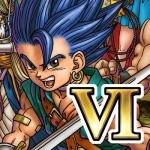
DRAGON QUEST VI
Games
App
Dragon Quest VI: Realms of Revelation , the final instalment in the Zenithian trilogy, is now...
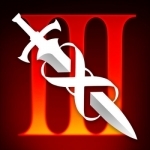
Infinity Blade III
Games and Entertainment
App
Join our new forums: https://www.epicgames.com/infinityblade/forums/ What the press is saying about...
BankofMarquis (1832 KP) rated Raya and the Last Dragon (2021) in Movies
Sep 25, 2021
Strong Animation and Voice Work overcome "Standard" Plot
One of the first films to be released (both in theaters and on-line) during the pandemic, RAYA AND THE LAST DRAGON came and went quickly - certainly ignored in the movie theaters, and with very little fanfare on-line.
And that’s too bad for RAYA AND THE LAST DRAGON is a fun, fantastical and visually rich tapestry that weaves together strong characters, a good lesson and enough action and comedy to keep young and old alike engaged throughout.
RAYA tells the story of the land of Kumandra, a realm that was inspired by Southeast Asian countries (such as Thailand, Malaysia and Indonesia) a land that is split into 5 parts that each face the same threat, but instead of banding together to fight this threat, they are splintered and selfish and look out only for their own - with little to no regard of the consequences to others.
Sound familiar? While the film was imagined and realized before the pandemic, the themes of this film reverberate strongly in this post-pandemic world that we live in.
Into this world drops Raya who, when betrayed by one she sees as a friend, sets out on a quest to find the last dragon and unify the 5 lands. It’s a typical “quest film” but one that is told with such heart and charm - with strong voice characters and beautiful animation - that I was won over by it.
Kelly Marie Tran (Rose Tico in the latest STAR WARS trilogy) brings Raya’s voice to life and it is a one that is embodied with hope, naivete and strength and really makes you root for her character. The voice work by the likes of Gemma Chan (CRAZY, RICH ASIANS), Benedict Wong (DR. STRANGE), DANIEL DAE KIM (TV’s LOST) and Sandra OH (TV’s GREY’S ANATOMY) are all as equally strong and nuanced and draws you into each of their characters and the story.
And then there is Awkwafina (SHANG-CHI) as the voice of The Last Dragon - she is on another level. It is not hyperbole to say that this voicework/character is on a par with David Spade’s work as Kuzco in THE EMPEROR’S NEW GROOVE and much like Spade, she ad-libbed much of her dialogue. It’s not quite at the level of Robin Williams in ALADDIN, but it’s in that ballpark - it is that good. This character makes or breaks this film and AWKWAFINA nails it - and makes the film.
This film is a “non-Musical” and I think that works well here. While this choice may turn off some families from viewing, this choice makes it a stronger film and is the right selection.
And then, there is the animation, which is even more impressive considering it was created from the animators in their homes during the pandemic. RAYA AND THE LAST DRAGON is a visual feast, weaving imagery and beautifully animated scenes throughout - I applaud those that made this incredibly beautiful film under such adverse conditions, it is a triumph.
All-in-all RAYA AND THE LAST DRAGON is well worth checking out, despite the plot being rather “standard”, the themes, characters, voice work and animation are all top notch - what one has come to expect from Disney Animation.
Letter Grade: A- (did I mention that the plot is rather “standard”)
8 Stars (out of 10) and you can take that to the Bank(ofMarquis)
And that’s too bad for RAYA AND THE LAST DRAGON is a fun, fantastical and visually rich tapestry that weaves together strong characters, a good lesson and enough action and comedy to keep young and old alike engaged throughout.
RAYA tells the story of the land of Kumandra, a realm that was inspired by Southeast Asian countries (such as Thailand, Malaysia and Indonesia) a land that is split into 5 parts that each face the same threat, but instead of banding together to fight this threat, they are splintered and selfish and look out only for their own - with little to no regard of the consequences to others.
Sound familiar? While the film was imagined and realized before the pandemic, the themes of this film reverberate strongly in this post-pandemic world that we live in.
Into this world drops Raya who, when betrayed by one she sees as a friend, sets out on a quest to find the last dragon and unify the 5 lands. It’s a typical “quest film” but one that is told with such heart and charm - with strong voice characters and beautiful animation - that I was won over by it.
Kelly Marie Tran (Rose Tico in the latest STAR WARS trilogy) brings Raya’s voice to life and it is a one that is embodied with hope, naivete and strength and really makes you root for her character. The voice work by the likes of Gemma Chan (CRAZY, RICH ASIANS), Benedict Wong (DR. STRANGE), DANIEL DAE KIM (TV’s LOST) and Sandra OH (TV’s GREY’S ANATOMY) are all as equally strong and nuanced and draws you into each of their characters and the story.
And then there is Awkwafina (SHANG-CHI) as the voice of The Last Dragon - she is on another level. It is not hyperbole to say that this voicework/character is on a par with David Spade’s work as Kuzco in THE EMPEROR’S NEW GROOVE and much like Spade, she ad-libbed much of her dialogue. It’s not quite at the level of Robin Williams in ALADDIN, but it’s in that ballpark - it is that good. This character makes or breaks this film and AWKWAFINA nails it - and makes the film.
This film is a “non-Musical” and I think that works well here. While this choice may turn off some families from viewing, this choice makes it a stronger film and is the right selection.
And then, there is the animation, which is even more impressive considering it was created from the animators in their homes during the pandemic. RAYA AND THE LAST DRAGON is a visual feast, weaving imagery and beautifully animated scenes throughout - I applaud those that made this incredibly beautiful film under such adverse conditions, it is a triumph.
All-in-all RAYA AND THE LAST DRAGON is well worth checking out, despite the plot being rather “standard”, the themes, characters, voice work and animation are all top notch - what one has come to expect from Disney Animation.
Letter Grade: A- (did I mention that the plot is rather “standard”)
8 Stars (out of 10) and you can take that to the Bank(ofMarquis)
Debbiereadsbook (1617 KP) rated Shadow Guardian (Blood Shadows #1) in Books
Feb 19, 2022
fabulous new world!
Independent reviewer for Archaeolibrarian, I was gifted my copy of this book.
Imagine reading a book, and it changes the way you see things. Everyday things, like the Shadow the light makes behind the cuppa tea on your desk. Or the one that is in the corner, cos the light doesn't quite reach that far. Cos let me tell ya, this book has done that for me!
Enter the world of the Shadows, with Guardians, Healers and Seers. With power tripping heads of Council who want. . . well I'm not really entirely sure what his plan will lead to, but it won't be good for the norms of this world, and maybe not even for those who can manipulate the Shadows. With a betrayal at the highest level. And with love at its most profound.
I loved this book! So forgive me if I rant a bit too much!
I loved that i could process each bit of new information, before the next bit came. I loved the layers to the story. There's romance, and danger. There's the world building, and the idiot trying to destroy it. There are friendship bonds, and those bonds being decimated. And so much romance, and even that being tested.
I loved that we didn't get who was controlling the Shadows that were so slimy, I had an idea but that was wrong.
I loved that Ethan took everything thrown at him, and promptly threw it back, tenfold. I loved that Kay was as damaged as he was. And I loved that when it all goes down, he says JUST the right thing to her! He melded himself into this world beautifully. I think there might be a secret or three about his full heritage to come out, but maybe I'm just reading into the story and being greedy cos I'm like that!
While Kay and Ethan do get a HFN ending, there is, I think, much to come for them. Their relationship will again be tested, and I can't wait to read about it! And Elizabeth, Kay's gran. She needs to be happy and given what is revealed here, she might be!
There is also the matter of the idiot and the Blood Shadows and what he will do now. I can't see which way he might go!
Zach, one of the Triad of Shadow Guardians with Kay and James is next. And I'm not certain who brings the trilogy to a close! James would be good, as the third in the Triad but that would mean he comes out of this mess. And if he does, he will be deeply damaged in many ways. Oh, he's gonna break my heart, I know he is! (Assuming he gets a book! *looks pleadingly at Ms Roberts!
Ms Roberts has a skill, that enables you to just fall into whichever world she writes about and you can just absorb it all, as an everyday occurrence and nothing out of the ordinary that these people can manipulate the Shadows, hinted with blues, greens and red, and heal people with a single touch.
So thank you, Ms Roberts, for a new world to fall into, even if it's just for these three books! I look forward to reading them!
5 full and shiny stars.
*same worded review will appear elsewhere
Imagine reading a book, and it changes the way you see things. Everyday things, like the Shadow the light makes behind the cuppa tea on your desk. Or the one that is in the corner, cos the light doesn't quite reach that far. Cos let me tell ya, this book has done that for me!
Enter the world of the Shadows, with Guardians, Healers and Seers. With power tripping heads of Council who want. . . well I'm not really entirely sure what his plan will lead to, but it won't be good for the norms of this world, and maybe not even for those who can manipulate the Shadows. With a betrayal at the highest level. And with love at its most profound.
I loved this book! So forgive me if I rant a bit too much!
I loved that i could process each bit of new information, before the next bit came. I loved the layers to the story. There's romance, and danger. There's the world building, and the idiot trying to destroy it. There are friendship bonds, and those bonds being decimated. And so much romance, and even that being tested.
I loved that we didn't get who was controlling the Shadows that were so slimy, I had an idea but that was wrong.
I loved that Ethan took everything thrown at him, and promptly threw it back, tenfold. I loved that Kay was as damaged as he was. And I loved that when it all goes down, he says JUST the right thing to her! He melded himself into this world beautifully. I think there might be a secret or three about his full heritage to come out, but maybe I'm just reading into the story and being greedy cos I'm like that!
While Kay and Ethan do get a HFN ending, there is, I think, much to come for them. Their relationship will again be tested, and I can't wait to read about it! And Elizabeth, Kay's gran. She needs to be happy and given what is revealed here, she might be!
There is also the matter of the idiot and the Blood Shadows and what he will do now. I can't see which way he might go!
Zach, one of the Triad of Shadow Guardians with Kay and James is next. And I'm not certain who brings the trilogy to a close! James would be good, as the third in the Triad but that would mean he comes out of this mess. And if he does, he will be deeply damaged in many ways. Oh, he's gonna break my heart, I know he is! (Assuming he gets a book! *looks pleadingly at Ms Roberts!
Ms Roberts has a skill, that enables you to just fall into whichever world she writes about and you can just absorb it all, as an everyday occurrence and nothing out of the ordinary that these people can manipulate the Shadows, hinted with blues, greens and red, and heal people with a single touch.
So thank you, Ms Roberts, for a new world to fall into, even if it's just for these three books! I look forward to reading them!
5 full and shiny stars.
*same worded review will appear elsewhere
Phillip McSween (751 KP) rated Spider-Man: No Way Home (2021) in Movies
Dec 26, 2021
Big Parker Energy
The trilogy of Tom Holland’s Spider-Man, has all been leading to this: An all-out battle resulting from a broken spell that Dr. Strange tried to cast. Let’s get this out of the way now: There will be zero spoilers in this review. Let’s also get this out of the way: You are going to love this movie.
Acting: 10
Stakes are extremely high here which could fall short on screen with weaker performances from the cast. The crew doesn’t disappoint here, both new and old. Tom Holland and Zendaya give you absolute gold, both during the high times and especially the low. I haven’t gotten this emotional over a Spider-Man movie since 2004’s Spider-Man 2.
But Willem Dafoe. Willem Dafoe, Willem Dafoe, Willem Dafoe. It felt like he was playing with an entirely different set of cards, all Aces. His performance was hands-down one of the best I’ve seen in a superhero film and one of the best I’ve seen all year. I absolutely couldn’t get enough of the impact he brought to this movie. Definitely brings the emotion out of you.
Beginning: 8
The movie picks up right where Far From Home leaves off. If you remember what happened at the end of that one, you will recognize that the third allows them to jump right into the conflict. Things start quickly, but not quite perfectly. I know this can be a challenge to do, but I’m wondering if they could have used the first ten minutes to cut to the meat of the story quicker. As it stands, it did take a bit of time for things to pick up.
Characters: 10
Cinematography/Visuals: 10
Conflict: 10
I haven’t been this satisfied with superhero action scenes since Avengers: Endgame. Man oh man, I wish I could say more but just know this: If you came to see some hardcore webslinging action, you will not be disappointed in the slightest. Everything is high stakes when you have a multitude of baddies involved. If the action wasn’t enough, you get taken on an emotional rollercoaster as Peter Parker is faced with a number of tough decisions throughout the movie.
Entertainment Value: 9
Memorability: 10
Pace: 8
Plot: 7
Perhaps the only thing that could have used just a tad bit of a brushup here. Mind you, this is off of one watch, so I could feel a bit differently if I go back and watch again. Then again, my motto is always, “If I can’t understand it the first time…” Yes, there is a lot to take in here and there are some things the film will ask you to take on face value. To me, the characters got on board with the craziness of what was happening a little too easily for my taste. Definitely could have been a bit more development there. For what it’s worth, the story was mostly solid and moved in fluid fashion.
Resolution: 10
Overall: 92
I don’t always enjoy writing reviews, even when it’s a good one. Here I am at the end of my Spider-Man: No Way Home review and there is so much more that I want to say. Some movies are impactful, others iconic. This one is damn near legendary. Phenomenal job by director Jon Watts who is quickly becoming a legend in my eyes.
Acting: 10
Stakes are extremely high here which could fall short on screen with weaker performances from the cast. The crew doesn’t disappoint here, both new and old. Tom Holland and Zendaya give you absolute gold, both during the high times and especially the low. I haven’t gotten this emotional over a Spider-Man movie since 2004’s Spider-Man 2.
But Willem Dafoe. Willem Dafoe, Willem Dafoe, Willem Dafoe. It felt like he was playing with an entirely different set of cards, all Aces. His performance was hands-down one of the best I’ve seen in a superhero film and one of the best I’ve seen all year. I absolutely couldn’t get enough of the impact he brought to this movie. Definitely brings the emotion out of you.
Beginning: 8
The movie picks up right where Far From Home leaves off. If you remember what happened at the end of that one, you will recognize that the third allows them to jump right into the conflict. Things start quickly, but not quite perfectly. I know this can be a challenge to do, but I’m wondering if they could have used the first ten minutes to cut to the meat of the story quicker. As it stands, it did take a bit of time for things to pick up.
Characters: 10
Cinematography/Visuals: 10
Conflict: 10
I haven’t been this satisfied with superhero action scenes since Avengers: Endgame. Man oh man, I wish I could say more but just know this: If you came to see some hardcore webslinging action, you will not be disappointed in the slightest. Everything is high stakes when you have a multitude of baddies involved. If the action wasn’t enough, you get taken on an emotional rollercoaster as Peter Parker is faced with a number of tough decisions throughout the movie.
Entertainment Value: 9
Memorability: 10
Pace: 8
Plot: 7
Perhaps the only thing that could have used just a tad bit of a brushup here. Mind you, this is off of one watch, so I could feel a bit differently if I go back and watch again. Then again, my motto is always, “If I can’t understand it the first time…” Yes, there is a lot to take in here and there are some things the film will ask you to take on face value. To me, the characters got on board with the craziness of what was happening a little too easily for my taste. Definitely could have been a bit more development there. For what it’s worth, the story was mostly solid and moved in fluid fashion.
Resolution: 10
Overall: 92
I don’t always enjoy writing reviews, even when it’s a good one. Here I am at the end of my Spider-Man: No Way Home review and there is so much more that I want to say. Some movies are impactful, others iconic. This one is damn near legendary. Phenomenal job by director Jon Watts who is quickly becoming a legend in my eyes.
BankofMarquis (1832 KP) rated Avatar: The Way of Water (2021) in Movies
Jan 2, 2023
Strong Visuals - Weak Everything Else
See AVATAR: THE WAY OF WATER on the biggest 3D Screen, with the best Sound System possible. It is a technical marvel…way ahead of anything that has, thus far, been seen on a movie screen.
It’s too bad the story (and characters) lag far behind.
Taking the audience back to the world of Pandora, AVATAR: THE WAY OF WATER treads familiar territory as Director James Cameron returns us to this idyllic planet, with the natives living peacefully, in concert with the land, until the soldiers from Earth show up (again) to strip the planet of it’s native contents (again).
Cameron (TITANTIC) expands this 3D World, bringing the audience from the trees to the water - and what an expansion this is! It is a BEAUTIFUL film to watch and Cameron (as one would expect) expertly pushes the technological edges of the industry, bringing us stunning visuals underwater. It is this part of the more than 3 hour film that is worth the price of admission alone. It is a feast for the eyes.
But what Cameron (and his FOUR writers of the script - never a good sign) fail to do is to add interesting characters and stories to these amazing visuals. It is a pretty straight forward telling of Good (the native peoples) vs. Evil (the invading soldiers from Earth). There is no nuance or subtly whatsoever throughout this film.
Back from the first film are Sam Worthington (just as wooden and uninteresting), Zoe Saldana (just as underused) and Stephen Lang (just as one-note as the villain). Obviously, it is just their voices used - for they are all rendered as Pandorans via motion-capture - but they don’t have much to do except be one with the nature (the good guys) or destroy nature (the soldiers).
Joining the cast - and just as underused - are Cliff Curtis, CCH Pounder and, especially, Kate Winslet. Cameron brings in some really fine performers who have to spout wooden dialogue that would make George Lucas blush - all the while performing in motion capture suits. This movie could have been so much better had Cameron given these actors something better and more interesting to do.
The only exception to this is the young actress (so I thought) that portrayed Kiri - who is the daughter of the Sigourney Weaver character from the first film. This Pandoran was born under mysterious circumstances (Virgin birth? Do we have a Messiah?) and is more in tune with the nature of the world they live in. This young actress had the most interesting things to do and she absolutely nailed it, so I should not have been surprised to find out that this “young actress” was none other than - Sigourney Weaver.
Well done, Cameron and Weaver. You got me on this one.
This film (the second in what will be a trilogy - or maybe more) has a run time of over 3 hours - so be warned - but Cameron keeps things moving along at a sprightly pace, never lingering over the clunky dialogue, but stopping to watch the beautiful visuals along the way.
AVATAR: THE WAY OF WATER is worth watching for the water and the stunning visuals…but not for much else.
Letter Grade: B+ (10 for the visuals, 5 for the story)
7 1/2 stars (out of 10) and you can take that to the Bank(ofMarquis)
It’s too bad the story (and characters) lag far behind.
Taking the audience back to the world of Pandora, AVATAR: THE WAY OF WATER treads familiar territory as Director James Cameron returns us to this idyllic planet, with the natives living peacefully, in concert with the land, until the soldiers from Earth show up (again) to strip the planet of it’s native contents (again).
Cameron (TITANTIC) expands this 3D World, bringing the audience from the trees to the water - and what an expansion this is! It is a BEAUTIFUL film to watch and Cameron (as one would expect) expertly pushes the technological edges of the industry, bringing us stunning visuals underwater. It is this part of the more than 3 hour film that is worth the price of admission alone. It is a feast for the eyes.
But what Cameron (and his FOUR writers of the script - never a good sign) fail to do is to add interesting characters and stories to these amazing visuals. It is a pretty straight forward telling of Good (the native peoples) vs. Evil (the invading soldiers from Earth). There is no nuance or subtly whatsoever throughout this film.
Back from the first film are Sam Worthington (just as wooden and uninteresting), Zoe Saldana (just as underused) and Stephen Lang (just as one-note as the villain). Obviously, it is just their voices used - for they are all rendered as Pandorans via motion-capture - but they don’t have much to do except be one with the nature (the good guys) or destroy nature (the soldiers).
Joining the cast - and just as underused - are Cliff Curtis, CCH Pounder and, especially, Kate Winslet. Cameron brings in some really fine performers who have to spout wooden dialogue that would make George Lucas blush - all the while performing in motion capture suits. This movie could have been so much better had Cameron given these actors something better and more interesting to do.
The only exception to this is the young actress (so I thought) that portrayed Kiri - who is the daughter of the Sigourney Weaver character from the first film. This Pandoran was born under mysterious circumstances (Virgin birth? Do we have a Messiah?) and is more in tune with the nature of the world they live in. This young actress had the most interesting things to do and she absolutely nailed it, so I should not have been surprised to find out that this “young actress” was none other than - Sigourney Weaver.
Well done, Cameron and Weaver. You got me on this one.
This film (the second in what will be a trilogy - or maybe more) has a run time of over 3 hours - so be warned - but Cameron keeps things moving along at a sprightly pace, never lingering over the clunky dialogue, but stopping to watch the beautiful visuals along the way.
AVATAR: THE WAY OF WATER is worth watching for the water and the stunning visuals…but not for much else.
Letter Grade: B+ (10 for the visuals, 5 for the story)
7 1/2 stars (out of 10) and you can take that to the Bank(ofMarquis)
